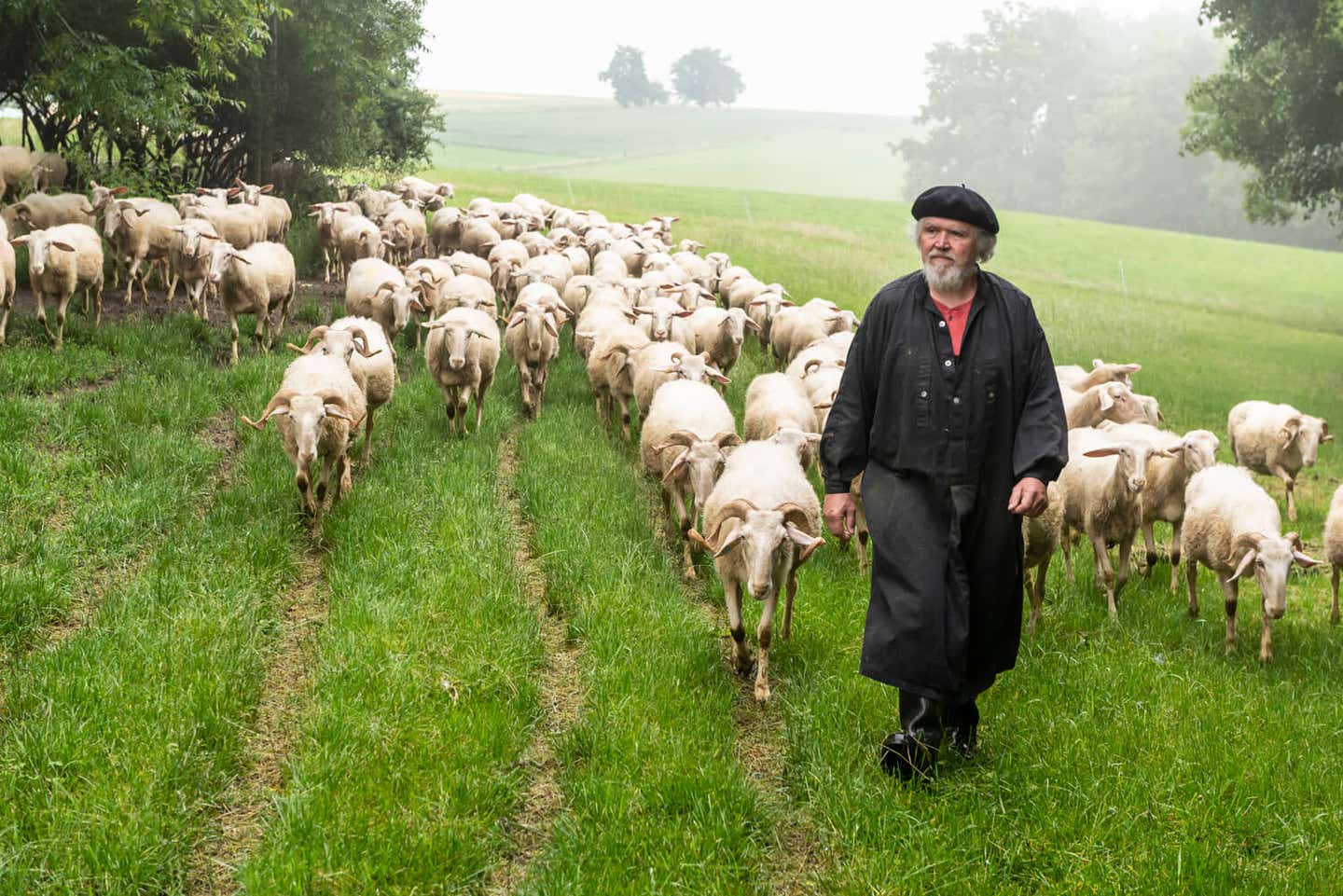DNA analysis reveals 11,000-year bond between sheep and humans
A genetic study of ancient sheep bones reveals how domestication, migration, and selection shaped early human societies.

Ancient DNA reveals how sheep shaped human civilization. (CREDIT: Udo Bernhart)
Sheep have been part of human life for over 11,000 years. First domesticated in the western Fertile Crescent, their impact extends far beyond providing meat. Their wool transformed clothing, their milk nourished communities, and their dung fueled fires.
Over time, these animals spread across Eurasia, shaped by human selection and migration. Now, a genetic study of ancient sheep bones sheds new light on their early domestication, dispersal, and adaptation.
The Origins of Domestic Sheep
Sheep were first domesticated from wild Asiatic mouflon in what is now Türkiye and Iran. Archaeological evidence suggests this began around 9,000 BCE. Early herding villages in central Türkiye, such as Aşıklı Höyük, show genetic links to modern domestic sheep. However, these early sheep were not the sole ancestors of today’s flocks. Instead, domestic sheep evolved through a mix of wild lineages.
A recent genomic study published in the journal Science, analyzed 118 ancient sheep genomes from across Eurasia, covering a span of 12,000 years. The study revealed that while early herders in Türkiye domesticated sheep, these animals later mixed with other populations. This genetic blending suggests that domestication was a gradual process involving multiple wild sheep lineages.
Selection for specific traits also began early. By 8,000 years ago, farmers were already choosing sheep for desirable features like coat color. Researchers found evidence of selection near the "KIT" gene, which is linked to white coats in many livestock species. This marks one of the earliest examples of humans shaping the biology of domesticated animals.
Sheep Migrations and Human Movement
Sheep did not remain confined to their place of origin. Their spread across Eurasia mirrors human migrations and cultural changes. Genetic evidence shows two major waves of sheep movement.
The first migration occurred around 7,000 years ago. As Mesopotamian cities flourished, sheep were transported westward into Europe. These animals carried genetic markers distinct from their eastern relatives, showing that people deliberately moved their flocks to new regions.
Related Stories
A second, more dramatic migration took place around 5,000 years ago. During the Bronze Age, pastoralist groups from the Eurasian steppes moved westward. This migration reshaped human populations, altering the ancestry of European societies. The same genetic shift occurred in sheep. By the time of the Bronze Age, roughly half the ancestry of European sheep came from steppe populations.
Dr. Kevin Daly, an expert in agricultural genetics, explains: "One of our most striking discoveries was a major prehistoric sheep migration from the Eurasian steppes into Europe during the Bronze Age. This parallels what we know about human migrations during the same period, suggesting that when people moved, they brought their flocks with them."
The Role of Sheep in Early Societies
Sheep were essential to early economies. Beyond meat, their wool became a crucial resource. Wool is warm, breathable, and water-resistant, making it ideal for textiles. By the fourth millennium BCE, wool production was a major industry in Southwest Asia. Later, during the Bronze Age, European societies expanded wool production, establishing trade networks based on textiles.
Sheep milk was another key resource. Dairy products, including cheese, provided a stable food source. Genetic studies suggest that by the time of the Bronze Age migration, sheep milk was an important part of human diets. This shift coincides with the genetic changes seen in both humans and livestock, indicating a growing reliance on dairy.
Professor Dan Bradley, a leader in genetic research, highlights this connection: "This research demonstrates how the relationship between humans and sheep has evolved over millennia. From the early days of domestication through to the development of wool as a crucial textile resource, sheep have played a vital role in human cultural and economic development."
The Future of Sheep Genetics
While this study clarifies the origins of domestic sheep, questions remain about their later evolution. Modern sheep breeds are diverse, with unique adaptations to different environments. Further research is needed to trace how sheep populations developed into the many varieties seen today.
Professor Joris Peters, an expert in domestication research, notes: "Our study convincingly reconciles morphological and genomic evidence of the geographic origin of domestic sheep. However, further research is needed to clarify the patterns of dispersal and selection of the many landraces occurring today in Eurasia and Africa."
As scientists continue to uncover the history of domesticated animals, sheep remain a key species in understanding human history. Their genetic story reflects the deep and evolving relationship between humans and their livestock, a connection that has shaped cultures for thousands of years.
Note: Materials provided above by The Brighter Side of News. Content may be edited for style and length.
Like these kind of feel good stories? Get The Brighter Side of News' newsletter.
Rebecca Shavit
Science & Technology Journalist | Innovation Storyteller
Based in Los Angeles, Rebecca Shavit is a dedicated science and technology journalist who writes for The Brighter Side of News, an online publication committed to highlighting positive and transformative stories from around the world. With a passion for uncovering groundbreaking discoveries and innovations, she brings to light the scientific advancements shaping a better future. Her reporting spans a wide range of topics, from cutting-edge medical breakthroughs and artificial intelligence to green technology and space exploration. With a keen ability to translate complex concepts into engaging and accessible stories, she makes science and innovation relatable to a broad audience.



